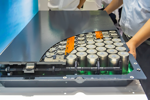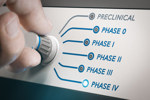ARTICLES BY EMILY NEWTON
-
Will Digital Twins Usher In A New Era Of 6G Wireless?9/17/2025
Since sixth-generation (6G) wireless networking technology is considerably more complex than its predecessors, it will depend on various modern technologies. Of all these cutting-edge tools, network digital twins are the most important. This technology will be fundamental in deploying next-gen wireless communication systems at scale.
-
Commercial Energy Management Gets An Upgrade From IoT7/23/2025
Internet of Things (IoT) integrations are becoming more common, particularly for IoT energy management in commercial buildings. This surge in adoption is driven by the need to offset rising costs and growing inefficiencies with real-time monitoring and granular control. How does this technology outperform traditional alternatives?
-
How Do 8 Layers Of IoT Security Keep Devices Safe?5/2/2025
Engineers and computer experts are constantly learning more about the Internet of Things (IoT). The coming decades will likely introduce millions more sensor-based devices into networks. These attack surfaces introduce numerous security concerns.
-
Automotive Sensors: Steering The Development Of Autonomous Vehicles10/21/2024
Autonomous vehicles are some of the most exciting technological developments today. While there’s still a long way to go before fully self-driving cars are a reality, researchers are getting closer every day. Advances in automotive proximity sensors are the key driver of this progress.
-
Bandwidth Battleships Testing Cloud-Connections For Naval Fleets10/15/2024
The Navy has been migrating its collaborative environments to the cloud under a system dubbed Flank Speed. Now, Flank Speed is coming to ships while they’re away from shore.
-
Why Is This Wireless Power System A Breakthrough For Efficiency?9/12/2024
Energy and spectral efficiency are crucial considerations for the Industrial Internet of Things (IIoT). While most system architectures approach these as separate considerations, they may grow closer together in the future. A new wireless power transfer technology could prove a critical step forward in terms of both energy and communication.
-
Integrating Advanced Polymers: Why It Matters For Your High-Power RF Design8/9/2024
Insulating polymers play a critical role in wireless electronics design. High-powered RF components, in particular, must take material selection seriously to strike an optimal balance between temperature, signal, physical strength, and circuit efficacy. New thermal management polymers make these complex decisions easier.
Electronics engineers have far more than simple silicone at their fingertips today. Still, advanced polymers introduce new cost and production considerations, so some professionals may hesitate to embrace them. Despite those fears, integrating these materials is crucial for several reasons.
-
Understanding The Role Of IoT In Streamlining Battery Production7/23/2024
Lithium batteries are among the most crucial components in modern electronics. As the Internet of Things (IoT) grows and electric vehicles (EVs) become more common, battery demand is surging. Meeting the rising pressure for production speed and quality can be challenging, but new technologies hold an answer. While the IoT is itself a key driver of battery demand, it plays a critical role in the manufacturing of these devices. Understanding its potential in this area is the first step in optimizing workflows to meet the growing need for reliable, widely available lithium-ion batteries.
-
Mastering 5G Reliability: Safeguarding Your Network Infrastructure6/5/2024
5G promises unprecedented speed, lower latency, and more capabilities to support new and emerging technologies. However, protecting the 5G network infrastructure brings additional cybersecurity challenges, requiring operators and other communications industry professionals to plan additional safeguards. Having the dangers of the 5G infrastructure explained in clear language allows proactivity and avoids vulnerabilities.
-
Green IT Strategies Set New Standards for Computing5/16/2024
Mounting climate concerns affect virtually every industry. The tech sector is no exception, especially given the energy-reliant industry’s role in rising emissions and waste. Many organizations are looking to embrace green IT strategies amid this trend.
-
Mastering Phase Noise Measurement In Oscillator Production4/12/2024
Manufacturers producing products containing oscillators must understand how to measure phase noise and reduce it if necessary. Failing to take phase noise measurements as a part of the quality control process can reduce the item’s performance and reliability. Phase noise occurs when the phase of an oscillator’s output signal in the frequency domain fluctuates. Why does that matter, and which phase-noise measurement techniques should people use?
-
7 Unforgettable Ways IoT Is Reinventing Product Design3/21/2024
The Internet of Things (IoT) has changed how the world operates on several fronts. One of the most impactful of these shifts for businesses is how the IoT and product design have influenced one another over the past few years.
As the IoT has grown, so has its impact on product design methods and philosophies — even regarding non-IoT products. Here are seven ways this change has taken place.












